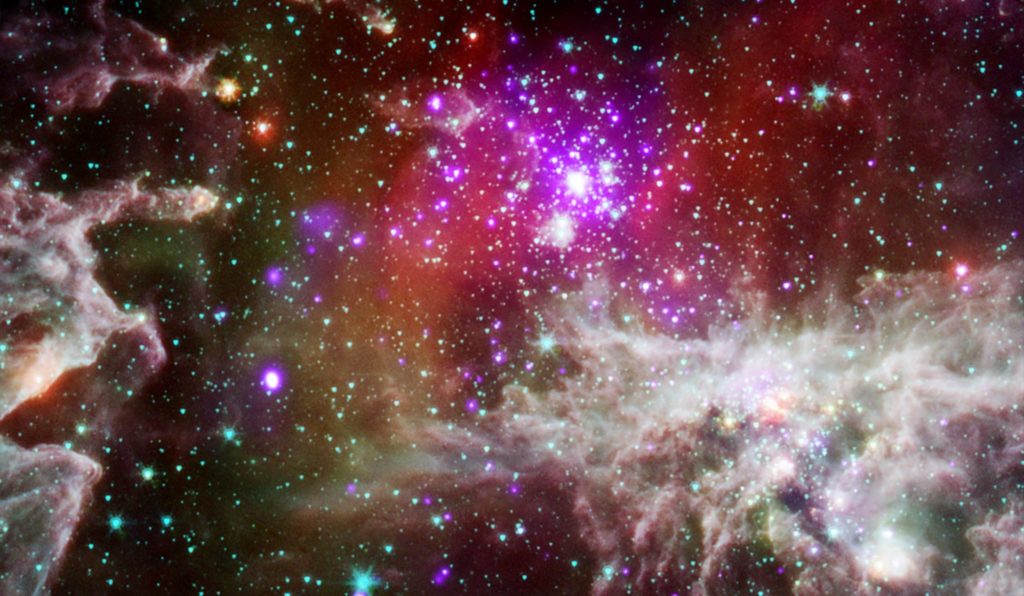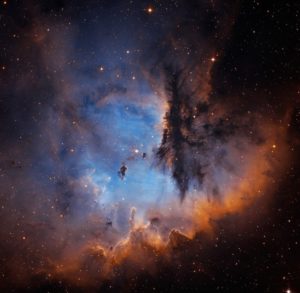
Photo: A composite image of NGC 281 containing X-ray data in purple and infrared observations in red, green, and blue. | credit: NASA/CXC/CfA/S.Wolk; IR: NASA/JPL/CfA/S.Wolk
NGC 281 is an emission nebula1 located in the constellation Cassiopeia, informally known as the Pacman Nebula due to its striking resemblance to a popular video game protagonist. It spans 48 lightyears across and contains several Bok globules,2 as well as a small, open star cluster (IC 1590). Dark lanes of dust cutting into bright clouds of gas create the trademark “mouth” shape that gives the nebula its nickname.

NGC 281, aka the Pacman Nebula | Martin Pugh
NGC 281 was first identified in 1883 by American astronomer and astrophotographer E.E. Barnard. Barnard, best known for his discovery of Barnard’s Star3 in 1916, noted NGC 281 as, “a large faint nebula, very diffuse,” upon discovering it.
1 A nebula formed of ionized gases that emit light of various wavelengths.
2 Dark nebulae that are typically small and isolated. They often form new stars within their dense dust and gas clouds.
3 A red dwarf star with a proper motion (movement in relation to the Sun) of 10.3 arcseconds per year, the highest known for any star.